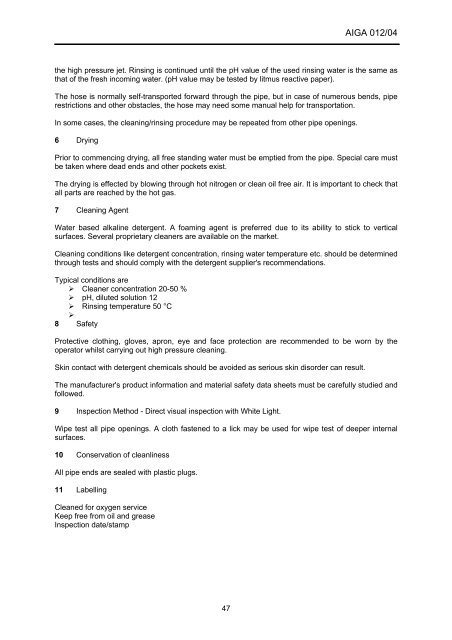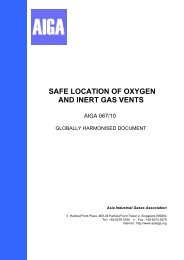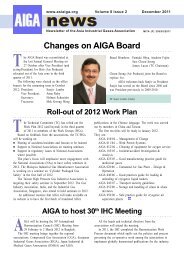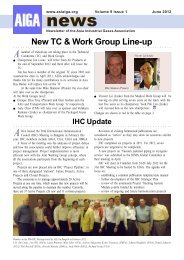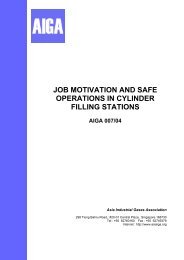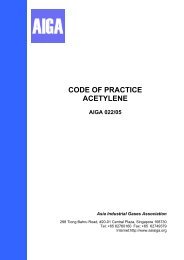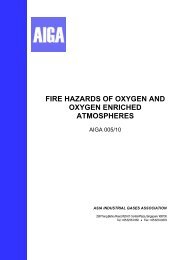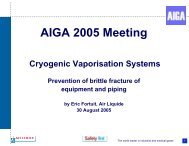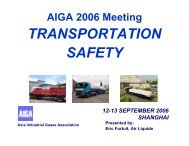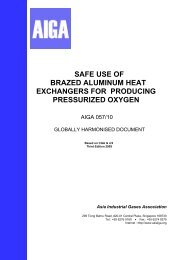CLEANING OF EQUIPMENT FOR OXYGEN SERVICE - AIGA
CLEANING OF EQUIPMENT FOR OXYGEN SERVICE - AIGA
CLEANING OF EQUIPMENT FOR OXYGEN SERVICE - AIGA
Create successful ePaper yourself
Turn your PDF publications into a flip-book with our unique Google optimized e-Paper software.
47<br />
<strong>AIGA</strong> 012/04<br />
the high pressure jet. Rinsing is continued until the pH value of the used rinsing water is the same as<br />
that of the fresh incoming water. (pH value may be tested by litmus reactive paper).<br />
The hose is normally self-transported forward through the pipe, but in case of numerous bends, pipe<br />
restrictions and other obstacles, the hose may need some manual help for transportation.<br />
In some cases, the cleaning/rinsing procedure may be repeated from other pipe openings.<br />
6 Drying<br />
Prior to commencing drying, all free standing water must be emptied from the pipe. Special care must<br />
be taken where dead ends and other pockets exist.<br />
The drying is effected by blowing through hot nitrogen or clean oil free air. It is important to check that<br />
all parts are reached by the hot gas.<br />
7 Cleaning Agent<br />
Water based alkaline detergent. A foaming agent is preferred due to its ability to stick to vertical<br />
surfaces. Several proprietary cleaners are available on the market.<br />
Cleaning conditions like detergent concentration, rinsing water temperature etc. should be determined<br />
through tests and should comply with the detergent supplier's recommendations.<br />
Typical conditions are<br />
� Cleaner concentration 20-50 %<br />
� pH, diluted solution 12<br />
� Rinsing temperature 50 °C<br />
�<br />
8 Safety<br />
Protective clothing, gloves, apron, eye and face protection are recommended to be worn by the<br />
operator whilst carrying out high pressure cleaning.<br />
Skin contact with detergent chemicals should be avoided as serious skin disorder can result.<br />
The manufacturer's product information and material safety data sheets must be carefully studied and<br />
followed.<br />
9 Inspection Method - Direct visual inspection with White Light.<br />
Wipe test all pipe openings. A cloth fastened to a lick may be used for wipe test of deeper internal<br />
surfaces.<br />
10 Conservation of cleanliness<br />
All pipe ends are sealed with plastic plugs.<br />
11 Labelling<br />
Cleaned for oxygen service<br />
Keep free from oil and grease<br />
Inspection date/stamp


